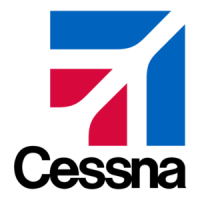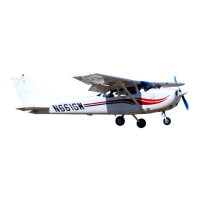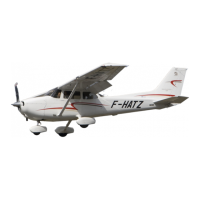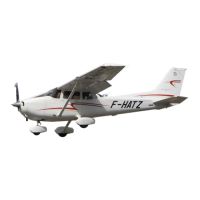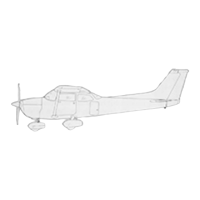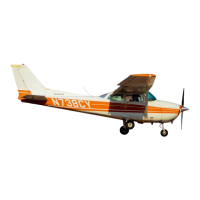
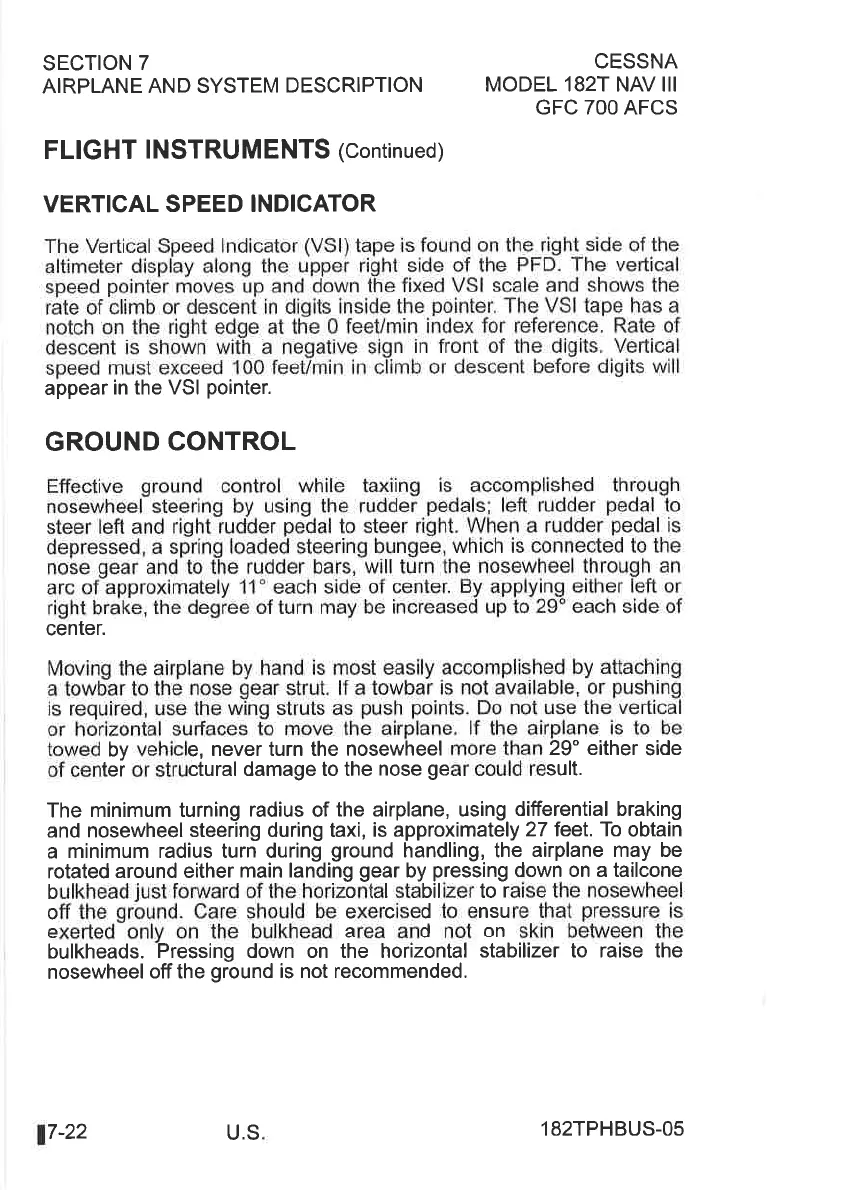 Loading...
Loading...
Do you have a question about the Cessna Skylane 182T and is the answer not in the manual?
| Manufacturer | Cessna |
|---|---|
| Model | Skylane 182T |
| Type | Single-engine piston |
| Engine | Lycoming IO-540-AB1A5 |
| Horsepower | 230 hp |
| Maximum Takeoff Weight | 3, 100 lb (1, 406 kg) |
| Wingspan | 36 ft (11.0 m) |
| Length | 29 ft (8.8 m) |
| Seating Capacity | 4 |
| Category | Aircraft |
| Maximum Speed | 148 knots |
| Stall Speed (with flaps) | 49 knots |
| Rate of Climb | 924 feet per minute |
| Empty Weight | 1, 970 pounds |
| Fuel Capacity | 87 gallons |
| Height | 9 feet 4 inches |
| Maximum Cruise Speed | 145 knots |
| Service Ceiling | 18, 100 feet |
